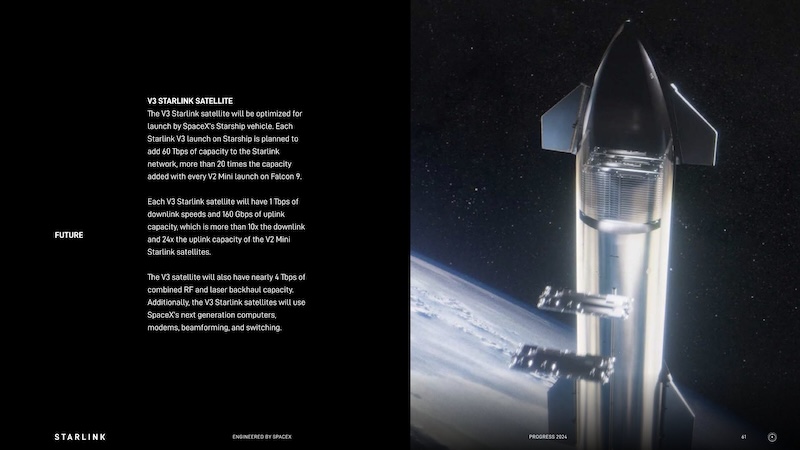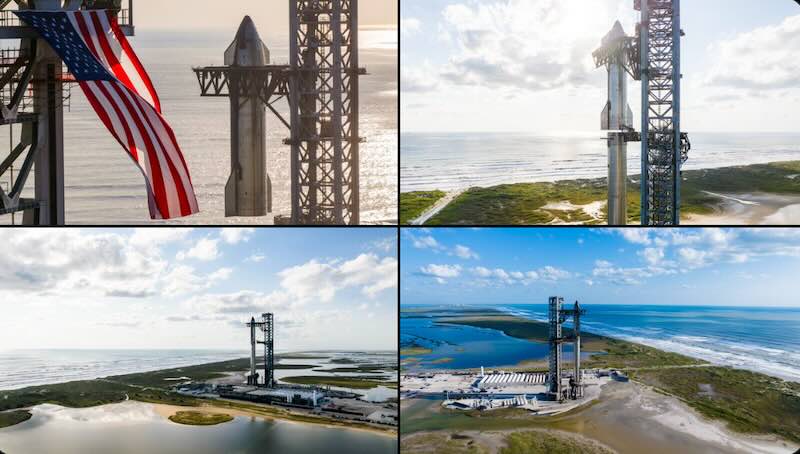SpaceX has finally explained why its Starship upper stage was lost during the starship test flight 7 last month, pointing to unexpected vibrations that triggered a catastrophic chain of events, (flight 7 report). The company also outlined ambitious plans for the upcoming Flight 8, scheduled for this Friday according to Elon Musk.
In a detailed post-flight analysis, SpaceX described how the mission unraveled: “Two minutes into its burn, a flash was observed in the aft section of the vehicle near one of the Raptor vacuum engines.” Sensors then detected pressure changes suggesting a leak, followed by another flash and sustained fires in the spacecraft’s “attic” area approximately two minutes later.
These fires forced most of Starship’s engines into controlled shutdown sequences and ultimately led to communication loss with the vehicle. The last telemetry was received just over eight minutes into flight, with the spacecraft breaking apart three minutes after losing contact.
SpaceX identified “a harmonic response several times stronger in flight than had been seen during testing” as the most probable root cause. This excessive vibration increased stress on propulsion system hardware, leading to propellant leaks that “exceeded the venting capability of the ship’s attic area and resulted in sustained fires.”
Despite the failure, SpaceX emphasized that safety systems functioned properly, with all debris contained within the planned Debris Response Area. SpaceX immediately coordinated with the Turks and Caicos government and the United Kingdom for recovery and cleanup.
SpaceX isn’t slowing down, with Flight 8 set to target objectives not reached in the previous test. The upcoming mission will feature Starship’s first payload deployment — four Starlink simulators similar in size to next-generation V3 starlink satellites — and multiple reentry experiments aimed at eventually returning the upper stage to the launch site for catching.

SpaceX next-gen V3 Starlink satellite
The company highlighted extensive upgrades to Starship’s design that debuted on the previous flight test:
- Redesigned forward flaps to reduce reentry heating exposure
- Propulsion system improvements with 25% increased propellant volume
- Complete avionics redesign for additional capability and redundancy
For Flight 8, SpaceX plans several experimental configurations to test reentry capabilities. These include intentionally removing tiles to stress-test vulnerable areas, testing metallic tile alternatives (including one with active cooling), and evaluating non-structural versions of Starship’s catch fittings.
The Super Heavy booster for this flight will feature upgraded avionics, including a more powerful flight computer, improved power distribution, and integrated smart batteries.
With Elon confirming on X that “Starship Flight 8 flies Friday,” all eyes will be on whether SpaceX can overcome the harmonic issues that doomed the previous test and successfully demonstrate the spacecraft’s growing capabilities.
Related Post
SpaceX V3 Starlink Satellites: 20x More Powerful Than Previous Generation, Launch on Starship
SpaceX Unveils Major Starship Upgrades for Test Flight 7: Next-Gen Features Revealed
SpaceX Aims for 400 Starship Launches: Shotwell Reveals Ambitious Space Plans
